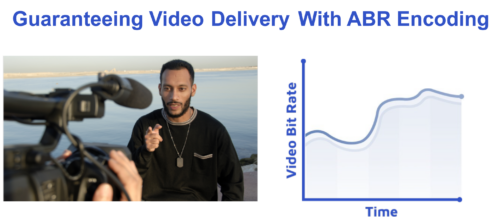The landscape of live video production is not confined to the four walls of a TV studio. Whether at the site of a bustling sports event, the epicenter of breaking news, or the heart of an entertainment gig, being able to point a camera towards the action, and instantaneously deliver this captivating content to the production center — no matter where in the world it may be located— facilitates incredible freedom and creativity. Herein lies the power of bonded cellular technology, the gateway to instantaneous and immersive storytelling.
Bonded cellular technology is rapidly becoming the preferred choice for remote live video content transmission. Public cellular networks now cover nearly every populated corner of the globe, offering a ready network that ensures broadcast freedom is just a button-click away.
Efficient Video Encoding with HEVC
Broadcast video is a data-hungry beast. Transporting high-definition video that requires a 3Gbit/s data rate over unpredictable networks would be a massive task. Enter the world of video compression. The latest HEVC video compression engines are capable of slashing the required bit rate by up to 50% compared to their older MPEG-4 counterparts. This means we can transmit HD quality video using significantly less than 10Mbit/s over a network link.
Since cellular connection data rates are not guaranteed, bonded cellular transmitters have been designed with the adaptability to dynamically adjust their encoded data bit rate. This adaptive bit rate (ABR) encoding technique ensures the video transmission remains uninterrupted, regardless of the network conditions.

The Impact of Channel Bonding
Despite the efficiency of HEVC encoding, transmitting broadcast-quality video over a single cellular connection remains a herculean task. Bonded cellular systems employ channel bonding to spread the video data across multiple, simultaneous cellular connections.
With several cellular connections working in tandem, the aggregated data rate exceeds what a single link can provide, enabling a high-quality video feed. Additionally, subscribing to network services from multiple cellular operators increases the odds of maintaining a strong, high bit rate connection, enhancing the probability of high-quality video transmission.
Through intelligent channel bonding algorithms, not only is transmission data spread across all available connections, but additional error correction and retransmission mechanisms work tirelessly to ensure connection robustness.
Debonding and the Power of Cloud Services
With the multiple data streams created by channel bonding, the next challenge is to debond and reconstruct these streams into a single video feed, ready for a broadcaster’s production workflow.
Debonding typically happens close to the production center, but the beauty of bonded cellular technology is that it can be done virtually anywhere, including in the cloud. The flexibility of cloud-based debonding allows dynamic scaling and offers a solution to manage short-term projects like an international assignment.
To streamline this process, Vislink’s LinkMatrix control system sits at the core of the bonded cellular system. This cloud-based connection manager and management system lets the production team manage incoming content and make connections as required, whether immediate or scheduled.
Beyond Cellular Connections
Bonding technology is not exclusively for cellular connections. It can be employed in any scenario where the quality of service is not guaranteed, or when multiple connections are needed to create a wide enough data pipeline to carry high-quality video.
The versatility of bonding technology lets it prioritize traffic favoring certain connections known to be more reliable or cost-efficient. It’s not uncommon for newsgathering trucks to use low earth orbit satellite systems like Starlink as the high-priority link, with cellular data as a backup.
Embracing the Future: Private 5G Connectivity
The rollout of public 5G networks around the globe portend greater speed and lower latencies. Private 5G networks alleviate the risk of network contention in densely populated areas or during mass events, offering a local wireless 5G network completely separate from public cellular infrastructure. They can be deployed and brought on-air rapidly to provide a local wireless 5G network that is completely separate from public cellular infrastructure, deliver high bandwidth, low latency and free from the risk of data contention with public mobile phone use – still with the freedom to roam.
Pushing the Boundaries: Moving Beyond News
Bonded cellular systems have proven to be the backbone of live news outside broadcasts. The ability to synchronize multiple camera transmitters opens up a world of opportunities for multi-camera shoots, empowering creative freedom without time discontinuity.
With the combination of instant access wireless connectivity and multi-camera synchronization, it becomes possible to scale-up production ambitions without sending production costs spiralling.
Reliable Video Connectivity on the Move
With the ability to deliver high data-rate video broadcast connectivity, critical broadcast robustness, and go-anywhere flexibility, channel bonding solutions enable dynamic camera team deployment. Such solutions allow broadcasters to go live from almost any location globally and make use of any connectivity that is available to them — be that cellular, public internet access points or low earth orbit satellite systems.

Clearly, bonded cellular technology is rapidly becoming the preferred choice for remote video content transmission, and a means for taking live broadcasting to an entirely new level.